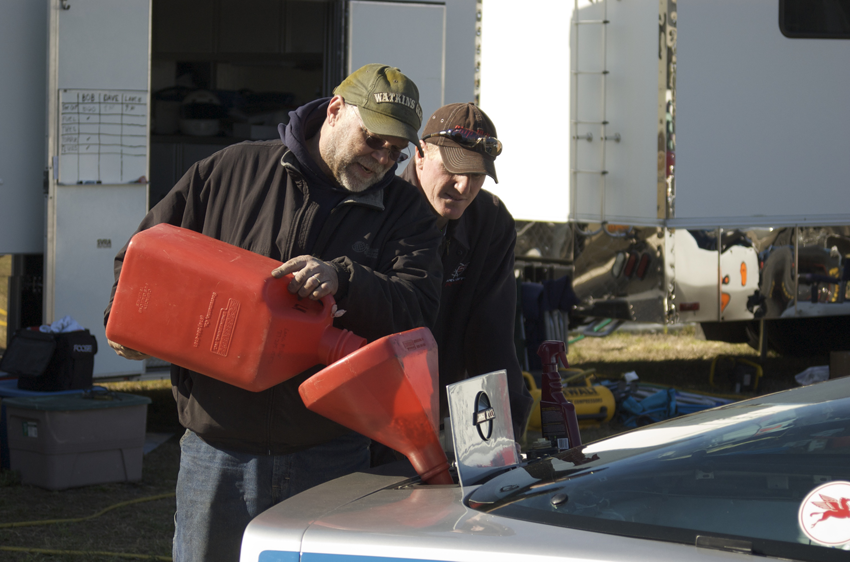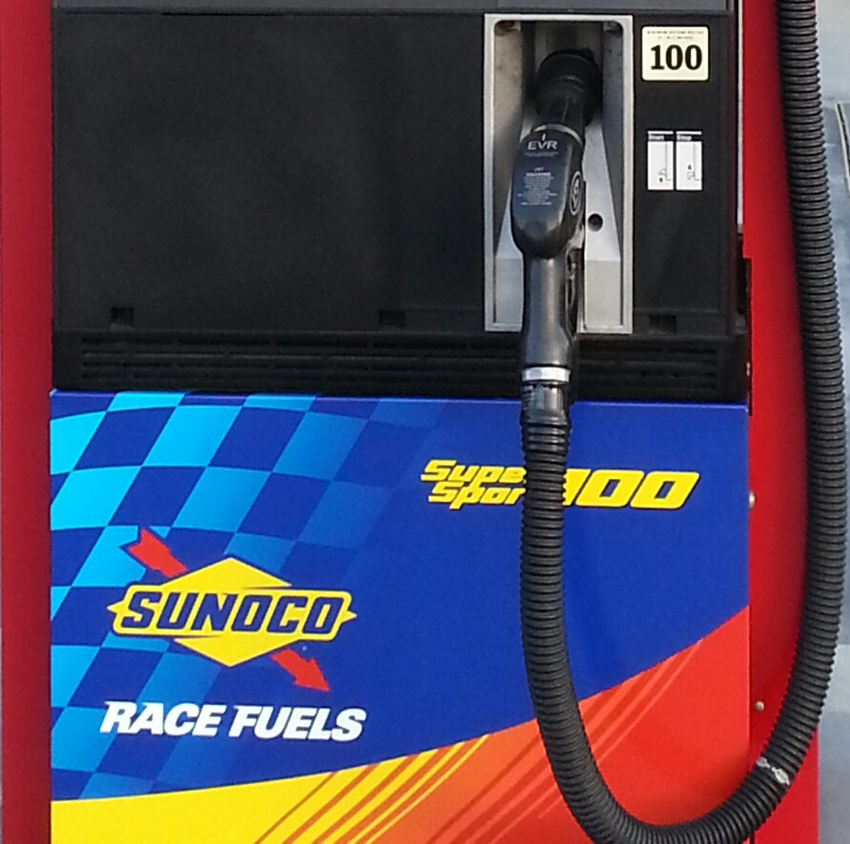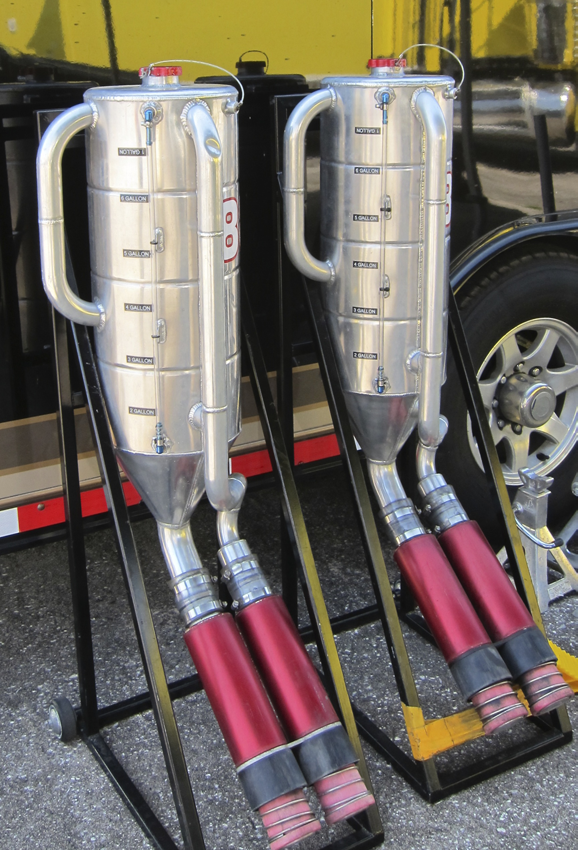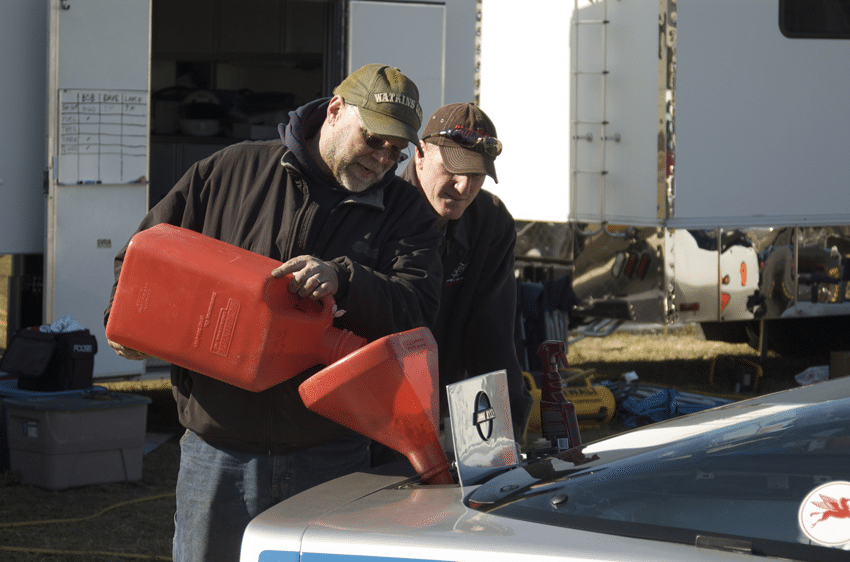
The gas tank in your collector car is a gasoline storage area. It’s a really bad storage area. If you would drive your car more often storage wouldn’t be an issue. That’s not going to change so we now have to figure how bad the gasoline in your car actually is.
Gasoline is a highly refined substance with complex molecular bonds. Over time, these bonds break and the fuel reverts back to an earlier unusable state. As the molecular bonds break, the octane rating falls to the point where the gasoline is no longer able to produce the energy required for effective internal combustion. It’s not unusual for highly refined premium gasoline to lose significant amounts of volatility within 90 days. This is especially true if you use the ethanol-enhanced gasoline from your neighborhood gas station.

The variety of chemicals used to create gasoline do not all react to air in the same way. The lighter chemicals evaporate first with the heavy chemicals remaining. When the more volatile chemicals waft away you get decreased performance. Your car will start fine, but it might lack the performance you’re expecting. When phase separation occurs the octane rating of the remaining fuel can drop by as much as three points.
Ethanol and Phase Separation
Ethanol is heavier than gasoline, which means it will settle in the bottom of your gas tank. Ethanol is also hygroscopic; this means the lower layer in your gas tank contains a great deal of water. Because most cars draw fuel from the bottom of the gas tank, your fuel problem just got really serious.
A gasoline/ethanol blend absorbs water until it triggers phase separation. An E10 gasoline blend has a 90-day shelf life in a closed tank, but only lasts 30 to 45 days in the vented gas tanks we have in classic cars. With a 10 percent ethanol blend you should replace the fuel in a vented tank about once a month. A lot of people recommend draining the fuel tank and fuel system. I think driving the car more often is a better solution.

What makes all of this really bad for collector cars is that the amount of ethanol that is found in your local gas station is not closely monitored. Are you actually getting E10? Or are you getting E15? State authorities monitor gas stations to make sure you’re getting the appropriate amount of fuel that you’re paying for; they do not check on the amount of ethanol in the fuel.
Additives
A lot of people believe in additive packages. The problem with these gasoline stabilizers is there is no controlled, and/or public, research. The only information we have is anecdotal. The most frequently recommended is additive is Sta-Bil. Other companies, including Briggs & Stratton, Toro/Lawnboy, and Yamaha sell a similar fuel stabilizer under their own brand name.
The major refiners hedge a little on using any of these products. Since they don’t refine stabilizers they have no reason to verify any of the anecdotal claims. On the other hand, they don’t entirely dismiss the use of a stabilizer. They do feel though that fresh gasoline is superior to any gasoline that has had a stabilizer added.

Everyone advises that you should add a stabilizer to gas as soon as you purchase gasoline. They are all adamant that no additive will restore old gasoline. The best you can hope for is that adding a stabilizer to old gas will stop any further degradation.
The Sta-Bill MSDS lists Petroleum Distillates as the primary ingredient. Gasoline is considered a petroleum distillate, as is kerosene. Basically a petroleum distillate is any product made from crude oil that has been distilled in a refinery and then processed further and purified in some manner. Some people describe Sta-Bil as a hydrotreated light napthenic distillate solvent extract. Or, mineral oil. Some argue that these products are primarily Pale Oil and Isopropyl Alcohol; I suspect we’ll never know exactly what is in those bottles.

VP Storage Fuel
We now have an alternative to those mysterious additives. VP Racing has created a fuel that will remain stable for two years. What’s even better is that it comes in both leaded and unleaded formulations.
VP Vintage Leaded
- Color: Light blue
- MON: 96
- RON: 100
- R+M/2: 98
- Specific Gravity: 0.715 @600 F
- Oxygenated: No
- RVP: 6.70 psi
VP Vintage Unleaded
- Color: Light Red
- MON: 92
- RON: 100
- R+M/2: 96
- Specific Gravity: 0.718 @600 F
- Oxygenated: No
- RVP: 8.10 psi
The R+M/2 number is the same octane calculation that you see on your local gas pump. As you can see, you should have no trouble with the octane level. You can try to find a local dealer from the VP web site or you can order online and have it shipped.
I like the fact this is real gasoline and not some mysterious chemical. I’m not really fond of how expensive this VP storage gas is, but then an annual carburetor rebuild is not cheap either.
You now have three ways for coping with gasoline storage. You can keep using the popular additives that are sold by everyone. Or, you can purchase a gasoline that has a shelf life of two years. Then we have my favorite choice. Drive the car a lot more often.





